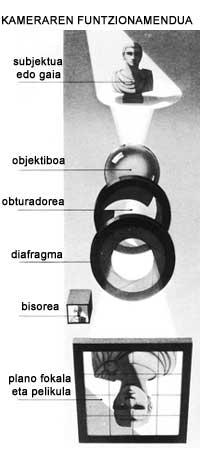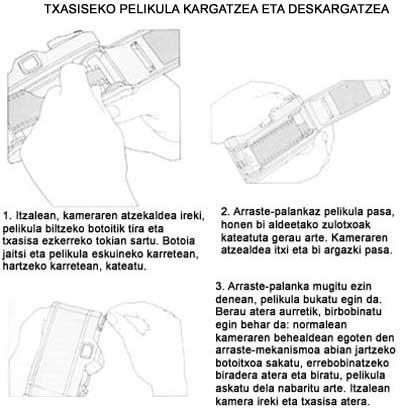Camera (I)
To take a good photo, it is enough to have an opaque box formed by lenses that focus the image, shutters that let the light reach the film for an instant and cavities for the film. It is also very useful to see what is going to be photographed.
George Eastman was the first to launch this tool.
It has been given the name of box camera. Shutter speed and fixed openings (1/125 s. in f11). It is not necessary to focus because the lens is located at a hyperfocal distance. Unless the subject is close, it offers images of great purity.
Dark cameras known for over 1,000 years, XVI. Converging lenses were placed in the landmarks in the 18th century. This created a clearer and more agile image on the focus screen. They were used to draw landscapes, still lifes and constructions.

But making a camera is the XIX. It was not possible until photosensitive materials were discovered in the 18th century. At that time, sensitive emulsions spread in glass sheets that replaced the focus screen in the camera, were brought to light with the necessary time and then revealed. In addition, to control the duration of the exposure, shutters and diaphragm were necessary to control the illumination of the image.
In the late 1880s, thanks to the box camera that used George Eastman's roll film, several photos were taken with a single load. Since then eleven models have been developed.
All these models, according to their format, can be grouped into three large groups: large or medium format cameras, small format cameras and special cameras. Before we see its characteristics, we must know the basic elements of the camera.
All cameras, even the simplest ones, have the following elements: lens, aperture or diaphragm, shutter, viewfinder and focal plane.
Objective
In its simplest form it is a convergent lens. To it comes the light that spreads through the subject to be photographed, and that light makes it correspond, forming an inverted image (both from top to bottom and from left to right), acidic and illuminated.
All modern cameras, to improve image quality, use lenses in different ways, i.e. compound lenses.
Composite lenses for optical calculations (focal length, e.g.) It has two points (called nodal points): the previous one is ray input and the subsequent ray output.
The distance from the posterior nodal point of the target to the focal plane, when the target is focused on infinity, is called focal length. The visual field of the target will depend on the length of the focus.
At the moment, the type of goal we are going to take into account is the so-called “normal”. This is seen with a perspective like the eye. In 35 mm cameras it has a focal length of 50 or 55 mm, in 6x6 of 80 mm and in Pocket 110 of 25 mm (the figure of the corresponding focal length usually appears at the front of the lens).
Opening or diaphragm
It is the opening located behind the lens (following the direction of the path of light). It works the same as the iris of the eye, depending on its diameter (fixed in some chambers, fixed in others), the light input to the camera will be smaller or larger. Most diaphragms are formed by plates that form a variable diameter gradually by a ring.
The opening of the diaphragm also affects the depth of field we will study in another section.
Shutter
This element determines when and how long light will come to the film or emulsion.
It can be of two types: central and focal plane The first is formed by metal plates and is located between the diaphragm and the target (together or behind the diaphragm). The second is made up of two metal curtains located just in front of the film.
Viewfinder
It is a piece of looking through the camera, which serves to frame and form the image. As we shall see later, it can be both direct and reflective.
Focal plane
It configures the thin image of the subject. As we take the picture, it is over it. The closer the subject's camera is, the further away it is from the target focal plane. Therefore, in order to obtain a fluid image of the next and remote subjects, a mechanism is necessary to bring the target closer and away to the camera, that is, the focusing mechanism.
We must not forget that in order to use all this we need light and subject/subject. It does not matter either the light source (sun, electric lamp, candles), but what comes out in the photo must be illuminated. Note that the word Greek photography means “drawing with light.”
Without a film we wouldn't do too much either, but next time we'll have more space to talk about this.

Buletina
Bidali zure helbide elektronikoa eta jaso asteroko buletina zure sarrera-ontzian











